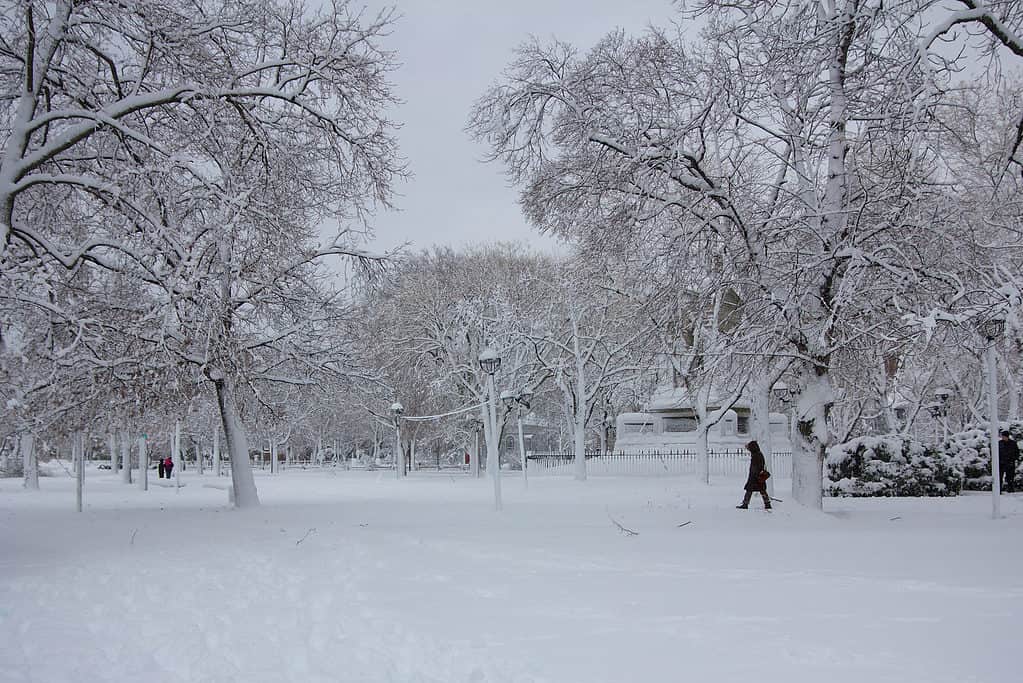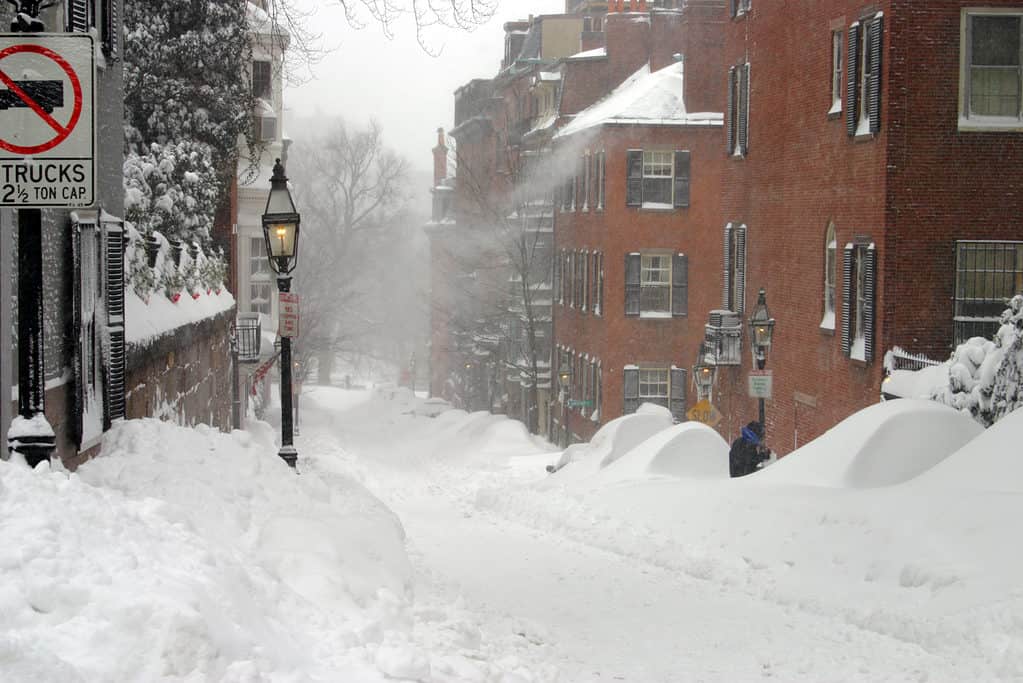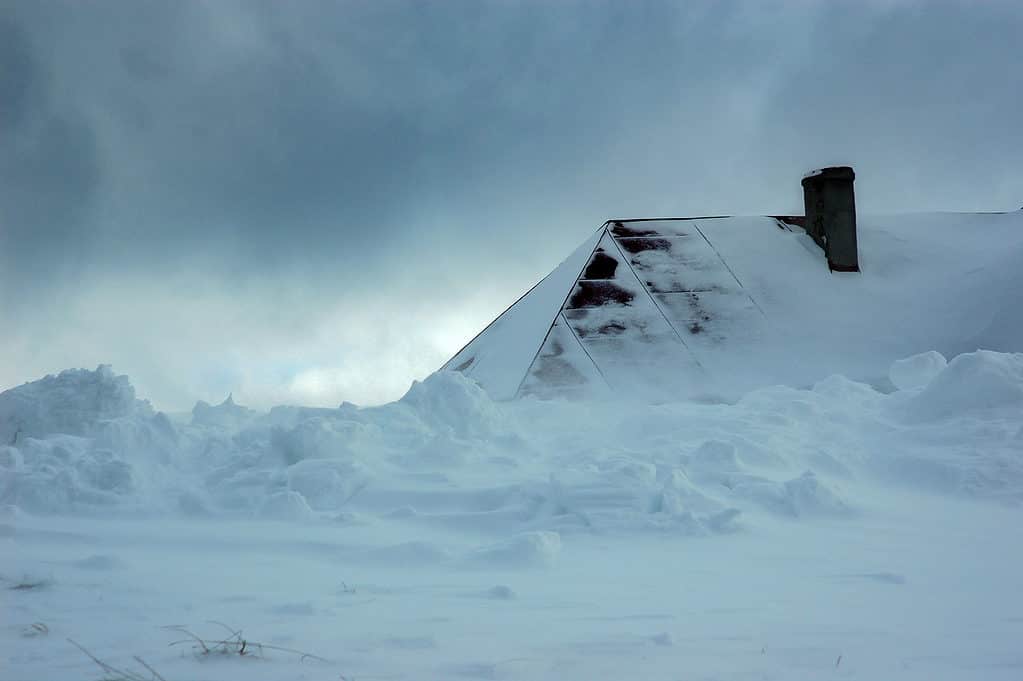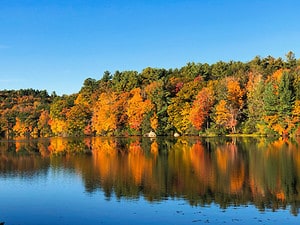Massachusetts is well-known for its wild weather. The state is no stranger to hurricanes, sweltering heat, wild storms, and fierce winter blizzards that drop seemingly endless amounts of snow in the different towns and cities of the state. A blizzard occurs when a snowstorm has sustained winds of at least 35 miles per hour and reduced visibility for as long as three hours. Although it is not typically as devastating as other extreme weather events, blizzards can also be dangerous. They can cause significant damage to life and properties. This post details all you need to know about the Great 1888 snowstorm, regarded as the biggest blizzard to ever hit the state of Massachusetts.

Massachusetts experiences fierce winter blizzards that drop seemingly endless amounts of snow in the different towns and cities of the state.
©iStock.com/janniswerner
The Blizzard State
Snowfall extremes are relatively common in Massachusetts. The most recent big blizzard occurred In January 2022. A blizzard hit Eastern Massachusetts and neighboring regions like Delaware and New Jersey. The blizzard began on a Friday evening and continued until Saturday afternoon. It is the seventh-largest snowstorm in Massachusetts. Aggressive winds blew up to 70 miles per hour, causing zero visibility. Authorities had to cancel several bus trips and about 617 flights.
In 2015, the Bay State experienced its largest snowfall within 24 hours. Worcester County received an incredible 31.9 inches of snow in one day — about two-and-a-half feet of snow. In 1978, a blizzard regarded as the storm of the century by many weather observers hit Massachusetts. The blizzard caused overwhelming flood tides along the coast, forcing ten thousand people into emergency shelters. Overall, it took the lives of 29 Massachusetts residents, destroying over ten thousand homes. The storm also caused more than one billion dollars in damages.
Other major blizzards recorded in Massachusetts back include the Winter Storm Nemo in 2013, the 2005 late January storm, the 1997 April Fools’ Day storm, and many others. Yet none compares to the biggest of them all — the great blizzard of 1888.

Snowfall extremes are relatively common in Massachusetts with historical blizzards that shut down cities.
©CO Leong/Shutterstock.com
The Great Blizzard Of 1888
Known as “the white hurricane,” the great blizzard of 1888 had such catastrophic consequences that it is considered the deadliest blizzard in United States weather history. It was so big that it is still used today as a reference point for blizzards in the world of extreme weather conditions. The deadly blizzard was a dangerous combination of severe wind, bitter cold, and deep and enormous drifts, coupled with snowfall so mighty, it was blinding.
Shortly before the blizzard’s arrival, the residents of Massachusetts had been joyously expecting spring. This expectation did not diminish, even with the news of a schoolhouse blizzard that had taken place in Nebraska. The additional appearance of crocuses which usually precede spring, made most Massachusetts residents erroneously believe they were safe. The assumption of safety was further established due to the lack of the characteristic cold air that breaks out before a storm. This was March, and the weather was expectedly warm.
The blizzard had begun with mild weather, and rapidly dropping temperatures caused rain to transform into snow after midnight on March 12, 1888. By afternoon, the heavy snow had brought life to a halt in Central and Western Massachusetts. The enormous waves continuously battered the coastline, damaging the immediate environment.
Almost a century later, the National Weather Service estimated that about 50 inches of snow were dumped in Massachusetts due to powerfully sustained howling winds. The blizzard produced severe winds with speeds of up to 80 miles per hour. This is around the same strength as a Category 1 hurricane. The snow was so much that only the chimneys were visible in some areas. The storm finally subsided on March 14, 1888, but people remained stuck in their houses for another week due to massive snow drifts.

The blizzard of 1888 in Massachusetts produced severe winds and so much snow that only the chimneys were visible in some areas.
©Mykola59/Shutterstock.com
How Much Damage Did the Biggest Blizzard to Ever Hit Massachusetts Cause?
The impact of the blizzard was widespread and wide-ranging. The lockdown precipitated by the blizzard caused food and heat shortages because, back then, most homes used coal-powered stoves. Cots were set up in hotel lobbies for the influx of people in need of warmth. There was a lot of transport gridlock in the Massachusetts region, which later culminated in the establishment of the pioneer underground subway system, which would open nine years after the blizzard in Boston. The Boston subway system is still regarded as one of the major positive outcomes of the 1888 blizzard.
Connecting rail lines were overwhelmingly filled with snow drifts that took eight days to clear off. Since there had never been a blizzard of such monumental proportions before, and this was still the age of little technology and knowledge about such extreme weather events, there was very little preparation.
In the end, about 400 people died in this snowstorm. The high mortality rate is precisely why people say this blizzard is the deadliest in US history. Since the blizzard adversely affected New York City as well, it is important to note that half of the dead were from New York.
Losses due to fire damage caused by the blizzard were up to 25 million dollars. Two hundred ships got sunk off the shores of the east coast, killing a hundred people. The impact of the windchill factor was destructive. People were stuck in fast-moving drifts, and it froze them to death. Those trapped in rail cars burned the car seats or anything wooden to survive the brutal cold. Telephone lines, which were new and less common, were useless because the blizzard damaged them. Even telegraphs were cut off. Overall, damages in Massachusetts amounted to 750 million dollars by current estimates.

The Boston subway system is still regarded as one of the major positive outcomes of the 1888 blizzard.
©iStock.com/Chris Watson
The Aftermath of the Blizzard
Those who survived the blizzard grappled with immense hardship in the days and months after the snowstorm. Farmers could barely tend to their livestock when the severe snowy conditions made a simple barn trip deadly. Those with factory jobs had to battle the deadly snow to go to work or risk losing a day’s pay. In the process, many people died trying to keep their jobs.
The local newspaper ran the story of a mill worker who got stuck in a snow drift just a few meters from the mill itself. The howling of the wind was so great that no one would have heard his cry for help. People who traveled had a life-or-death toil. Railroad cars were unable to move for days, leaving passengers and crew stranded without food and water in a horrific cold.
Ninety years later, the blizzard of 1978 took place in Massachusetts, and while extensive damage occurred, residents were better prepared and equipped with technology to battle the brunt of the storm. Most people even enjoyed the unexpected break brought on by the blizzard. This is diametrically opposite to what happened in 1888, where the nightmarish conditions compelled people to fight hard for survival.
The Great 1888 blizzard, which was so powerful in its destruction, became one of the most preeminent storms that taught America to learn from past mistakes in terms of natural disasters. It was the driving force behind the burial of overhead utility lines in major cities. As mentioned earlier, the creation of America’s first subway, which opened nine years after the disaster, was one of the good things that came out of the wild weather event. The snowstorm is also one of US history’s most photographed natural disasters.
Conclusion
Few storms are as rare and as iconic as the 1888 blizzard. Everything about this storm, in particular, was unusual, which is why it was the greatest blizzard to ever hit Massachusetts. No blizzard of the same magnitude has ever occurred again within the contiguous parts of America. Winters in Massachusetts are not for the faint-hearted, even to date. Fortunately, the advent of more advanced technology has made it easier to cope with blizzards and other extreme weather events. This has led to better outcomes today compared to a century ago.
Up Next
- The 8 Deadliest Flash Floods in History
- The Biggest Hurricanes of the 1970s in The United States
- The 11 worst blizzards in the united states
The photo featured at the top of this post is © iStock.com/Sanghwan Kim
Sources
- Weather Underground, Available here: https://www.wunderground.com/cat6/the-blizzard-of-1888-americas-greatest-snow-disaster
- Massachusetts Historical Society, Available here: https://www.masshist.org/object-of-the-month/2018-march
- Mass Moments, Available here: https://www.massmoments.org/moment-details/blizzard-shuts-down-massachusetts.html
- Only In Your State, Available here: https://www.onlyinyourstate.com/massachusetts/blizzard-of-1888-ma/amp/
- Wikipedia, Available here: https://en.m.wikipedia.org/wiki/Great_Blizzard_of_1888
Thank you for reading! Have some feedback for us? Contact the AZ Animals editorial team.






